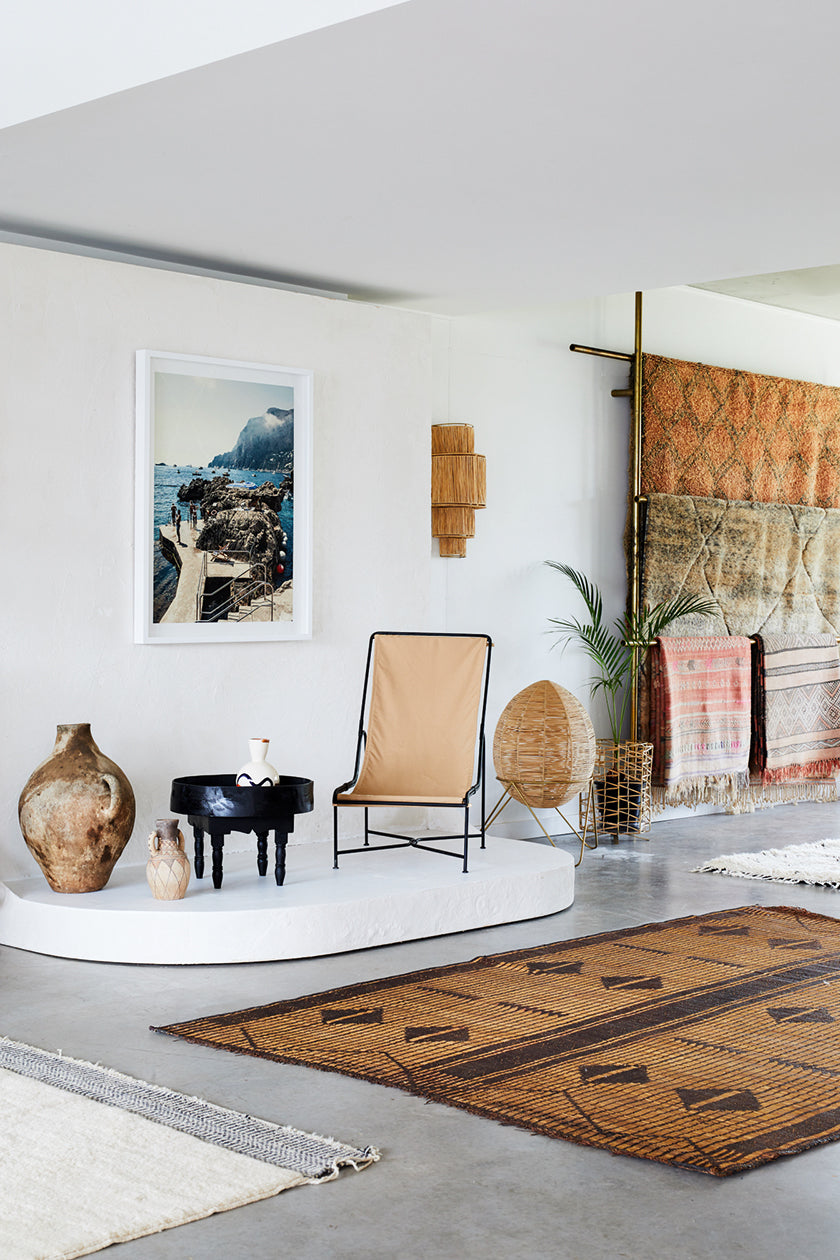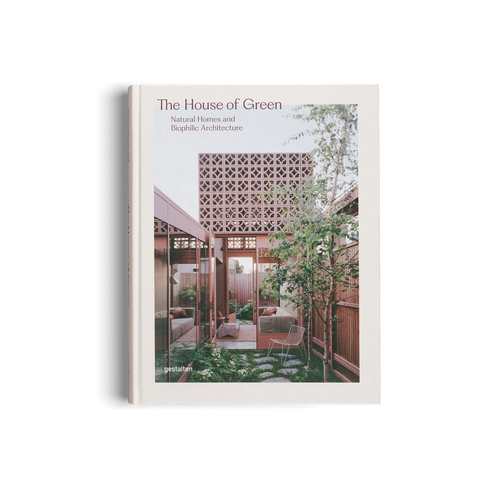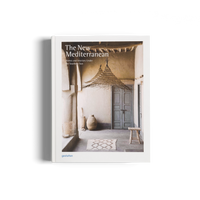
07/2020 architecture & interior
A figure reminiscent of an Egyptian hieroglyph slam dunks a basketball. Elsewhere, Lisa Simpson gives a stoic stare. The blankets, throws, and cushions by BFGF, a brand by Los Angeles-based artist Lilian Martinez, deserve a second glance. Her dust-hued compositions, which feature human forms, Grecian columns, and tropical plants all tickled by contemporary references, manage to weave together the old and the new into something altogether unexpected.

Tigmi Trading imports new and vintage rugs from Morocco to their boutique in Byron Bay. (Photo: Alicia Taylor, The New Mediterranean)
Another Los Angeles-based artist weaving contemporary references into textiles is the Australian-born Mark Hendrick, founder of Slowdown Studio. The pieces are the result of collaborations with artists from around the world, including tropical dreamscapes by Uruguayan artist Maite García and the playful primary colors of Berlin-based illustrators Zebu. Each blanket is made from 100 percent American-grown cotton and is woven in North Carolina.
Over in New York, the latest collection of Cold Picnic, Hide, is inspired by a zebra skin rug that laid on the floor of one of the founder’s grandfather’s home. Playful illustrations of wild animals splayed out like hunting trophies are woven into their rugs, blankets, and throws. Best of all, no zebras were hurt in the process.

Cheeky textiles blending classical and contemporary references by BFGF. (Photo: Daniel McKee, The New Mediterranean)
MA was founded by a Mexican artist looking to combine her contemporary art background with ancestral artisanal techniques. The brand works with native weavers to tell stories through the rugs. They depict the local landscapes and folklore through pleasing geometric patterns and warm, abstract compositions. See also the characterful ceramics, where each mug is painted with a face inspired by spiritual traditions from the Sierra Madre de Oaxaca.
Located in Chattanooga, Tennessee, Nåde is a small-batch textile studio where everything is made by hand and dyed using plants and food waste. Black beans, it turns out, create a cloudy shade of gray when introduced to natural wool, while warp threads achieve a rusty red from avocado pits. Nåde’s wall hangings are a fringed delight, while the cushions and rugs are geometric and joyful, woven at the Vida Nueva women’s cooperative in Oaxaca, Mexico.

Nåde’s geometric textiles are made by Mexican artisans. (Photo: Maggie Pate, The New Mediterranean)
Farther south in Argentina, a team of weavers works fastidiously using traditional looms. Their rugs can take up to six weeks to complete before winding up as part of the artisan collection of Pampa. The pattern of each rug is inspired by legends and the weaver’s natural surroundings, and each collection takes its name from the Argentinian landscapes.
Handwoven rugs age beautifully, this is imminently clear from just a cursory glance at the vintage rugs available through the online shop and studio of Tigmi Trading in Byron Bay. Dating back to the 1950s and 1960s and across Morocco, Turkey, and everywhere in between, these beautifully crafted pieces are both timeworn and timeless. These are one-of-a-kind pieces—when they are gone, they are gone.
As a counterpoint to factory-produced imitation rugs, which often mimic traditional weavings using synthetic materials, Unicef Market is an online portal to richly patterned, handmade pieces coming from Mexico, the Andes, Central America, and India, sourced to a high standard of fair trade and socially responsible producers. Proceeds from purchases go towards helping children in some of the world’s most vulnerable communities.
Writing in The New Mediterranean, co-author Eliora Stuhler explores a new wave of weaving brands from Argentina to Australia. Available in German and English.













